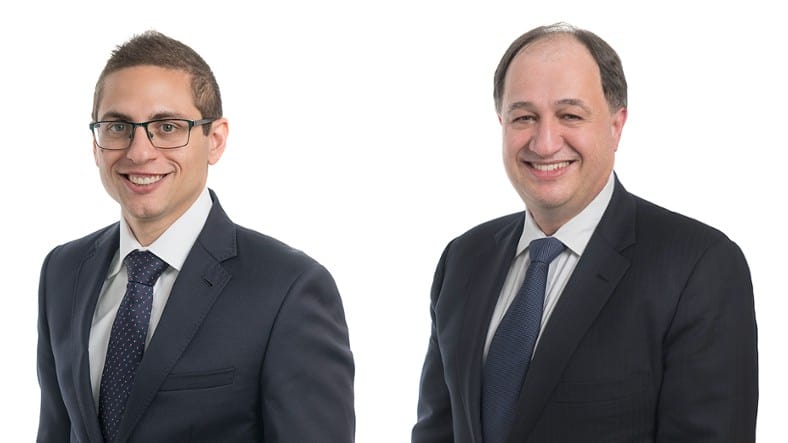Ask a Fund Manager
The Motley Fool chats with fund managers so that you can get an insight into how the professionals think. In part one of this edition, we're joined by Yarra Capital Management's fixed income specialists, Darren Langer, co-head of Australian fixed income, and Chris Rands, co-portfolio manager of the Yarra Australian Bond Fund. Today they explain why it appears the market is overpricing in the expected interest rate rises from the RBA, and what this means for the inflation outlook and the Aussie housing market.
The Motley Fool: A lot of investors were caught off guard by the hawkish tightening we're seeing from the US Fed and RBA. What's your outlook for inflation and interest rates in 2022 and heading into 2023?
Darren Langer: The risk was that central banks would overreact. And that's basically what's happened and is still happening to some extent.
But we think that things are going to start to slow down much faster than what central banks are expecting. You might start to see a shift in some of that rhetoric in the next few months. But for now, particularly the Fed, they're very hawkish. That's obviously not a great thing for bond markets or for risk assets when they're in that sort of mode.
Chris Rands: Really, as far as people being caught off guard with inflation, it's the oil price shock that occurred from the Russian Ukraine invasion.
Looking through our inflation indicators, commodity and food prices are causing a large increase in inflation levels. It was very hard to see this coming, and it is this shock that's taken inflation a leg higher.
If you assume that conflict will continue, then the oil price should remain high. Food prices should remain high. So that sets it up to have a base of higher inflation than the 2012 to 2019 period.
If the RBA is saying we're going to get this inflation down by hiking rates, it stands to reason that it needs to come from things that are not oil and not food. So something else needs to come down to bring inflation down. Whether that's rents or whether that's consumer discretionary spending or something like that, those are the prices that they're going to be targeting.
Looking at the US, there are signs that that's starting to occur. You're starting to see inventories build and those types of things. From that perspective, it looks like inflation should be a bit sticky for the next 12 months. And that puts the RBA in a position to raise rates. But we don't think it's going to be anywhere near as high as what the market expects.
MF: What level of interest rates are you expecting from the RBA?
CR: My calculations for what the economy can handle suggest a cash rate of 1.5%, that's probably about neutral. Once you start going beyond that I think you're going to start causing a bit of stress on people who've borrowed too much money over the past 18 months.
If the RBA wants to get back to neutral, it should start at 1.5%. If they really want to slow the economy down because they think it's too hot, they probably need to go above 2%.
MF: When can investors expect some easing?
DL: I think this is going to be a similar tightening cycle to what we observed in 1994. That was a very rapid tightening cycle, both by the Fed and the RBA, but within the next 12 months, they were both easing interest rates. So, as you get towards the back-end of 2023, if they keep hiking fairly aggressively, they're more than likely going to have to start cutting rates.
Markets are starting to price in that eventuality. You're starting to see the longer-dated futures contracts pricing is easing now. Whereas before the yield curve has been quite steep, and they were pricing higher rates forever. Now they're starting to realise that rate hikes are biting much faster than central banks would have thought.
MF: One of the big concerns right now is how higher interest rates will impact the Australian housing market. What's your outlook?
DL: We feel house prices are going to be under some pressure. We've had such a rapid rise in prices over the last 12 months, and a lot of those people borrowed a lot of money. There are a lot of fixed-rate loans starting to come off in the next six to 18 months, so that will bite quite quickly.
In Australia, most of our housing market is floating rate rather than fixed-rate, like in the US. So it bites a lot quicker here, which is one of the reasons we don't think the RBA is likely to tighten interest rates as much as the Fed will.
CR: For the housing market, wages over the past three years have barely moved, whereas house prices have risen 30%. A big chunk of that, in my opinion, is just low rates. And if you move rates back the other way, then you need to take some of those prices out.
If the RBA stops at 1.5%, which I think is neutral, then you might look at 2019-2020 levels for where house prices will stop. If rates go back to 2.5% or 3% like the market is forecasting, then it could be worse than that.
***
Tune in tomorrow for part two of our interview, where Yarra Capital's Darren Langer and Chris Rands discuss fixed income investing strategies in the new higher rate environment.
(You can find out more about the Yarra Australian Bond Fund here.)









